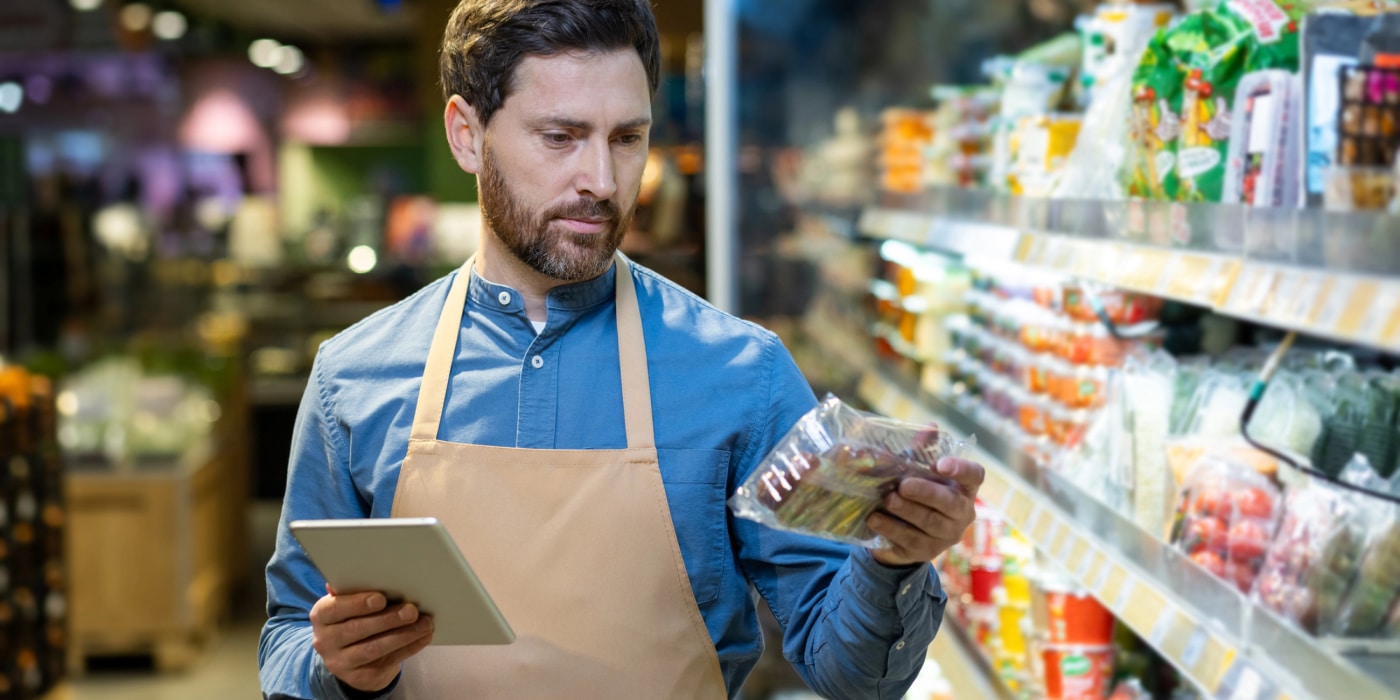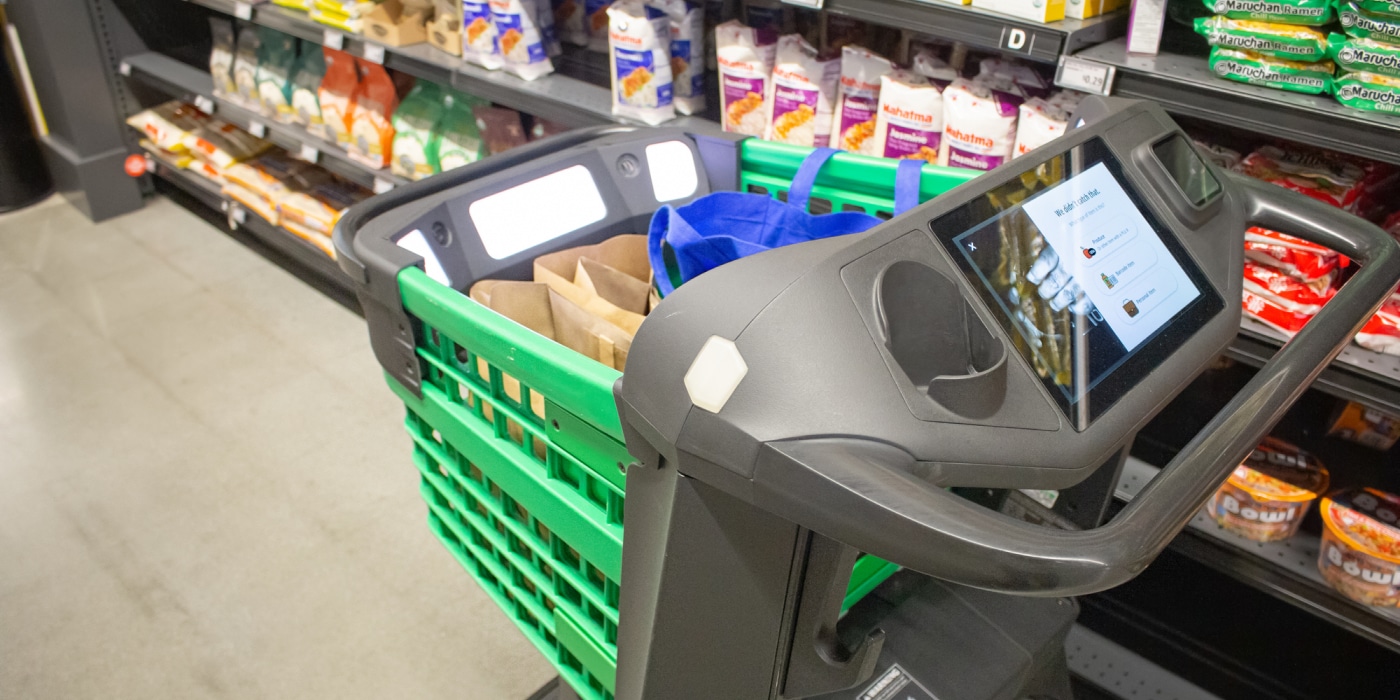What The Grocery Store of the Future Looks Like
While grocery eCommerce has grown, brick-and-mortar grocery stores are becoming more than just a place to shop for essentials. The grocery store of the future will look vastly different from today’s supermarkets, integrating automation, personalization, and customer-focused innovations. Grocery retailers are embracing technology to enhance the in-store experience and improve grocery fulfillment operations.
Here’s a look at what brick-and-mortar grocery stores will look like in the future.
Automated Inventory Management
In the future, grocery stores will become increasingly automated. Grocers are implementing innovative technologies to digitally monitor stock levels and adjust pricing, enhancing inventory management, boosting operational efficiency, and improving product quality. The Fresh Market plans to have Vusion 360 operating across its store fleet by the end of 2025. The technology suite will equip stores with electronic shelf labels, analytics tools and cloud-based inventory management solutions. In addition, the technology will address issues with produce display, fresh food availability and food waste.
Grocery co-op Wakefern Food Corp. recently expanded its partnership with Simbe Robotics, bringing its automated shelf-scanning robots, known as Tally, to more locations. Tally robots autonomously roam store aisles up to three times per day to scan products to ensure they are in-stock, in the correct location, and accurately priced. Simbe Robotics has also introduced fixed sensor units, known as Tally Spot, to identify and analyze items in specific areas of stores more frequently than the robots, enabling retailers to keep a closer eye on products that need frequent restocking or have elevated rates of shrink.

Community-Centric Spaces
Brick-and-mortar stores are evolving into more than just places to buy groceries, they’re becoming community hubs, hosting events such as cooking classes, wellness seminars, and sustainability workshops. This shift can help customers connect on a deeper level with the products they buy, increase customer engagement, and create stronger relationships between brands and shoppers.
Grocery retailers are remodeling their stores to create more community-driven experiences and offer customers more health-related services. Giant Food recently reopened the Healthy Living Center in its grocery store in Washington, D.C. The multi-purpose center offers various programs, including financial literacy, yoga classes, and nutrition education. Both Georgetown University and George Washington University are using the space to educate locals on preventative cancer measures and encourage them to get early screening tests.
Cashierless and Frictionless Checkout
In the future, the days of waiting in long checkout lines may be a thing of the past. With automated checkout systems, such as Amazon’s Just Walk Out cashierless checkout technology, customers will no longer have to interact with cashiers or scan products individually. The store will automatically detect what you’ve picked up and charge your account. Shopping carts will be smarter, equipped with built-in scanners, touchscreens, and AI-powered recommendations. Smart shopping carts can automatically scan items as they are added and process payments, streamlining the checkout process and making the shopping experience more convenient and enjoyable.
Several local and independent grocers are rolling out Caper Carts, Instacart’s AI-powered smart carts, at their stores. The carts feature cameras, sensors and a built-in scale, which work with an Edge AI system to automatically recognize items as they’re placed in a cart. Caper Carts also have an interactive screen that tracks spending, provides access to deals, and offers product recommendations based on the customer’s location in the store and the cart’s contents. The carts provide shoppers with automatic discounts as their basket value increases. When they’re done shopping, customers can check out from the cart.

Fulfillment Growth
To keep up with rising online grocery shopping demand, many retailers are transforming parts of their physical stores into micro-fulfillment centers and investing in fulfillment automation. Automated storage and retrieval systems enable rapid online order processing, reducing wait times for pickup and delivery. Retailers like Walmart and Kroger have already invested in AI-powered fulfillment centers.
The Kroger Co. is aiming to bolster productivity at its network of customer fulfillment centers (CFCs) with the addition of new technology from Ocado Group. The grocer will implement a wide range of new automated technologies at CFCs in its existing network, as well as those still in the pipeline. Ocado Group’s technologies include On-Grid Robotic Pick and Automated Frameload, which the company says will bring new levels of efficiency and labor productivity to Kroger’s grocery delivery network.
The grocery store of the future will be a fusion of convenience, technology, and personalization, creating experiences that cater to the needs and desires of modern consumers. With AI, automation, and innovative technology leading the way, grocery stores are becoming more dynamic, efficient, and customer-centric, providing seamless and enjoyable experiences.
For more information about how our delivery management solution can help you manage your delivery operations more efficiently, please contact info@bringoz.com.
